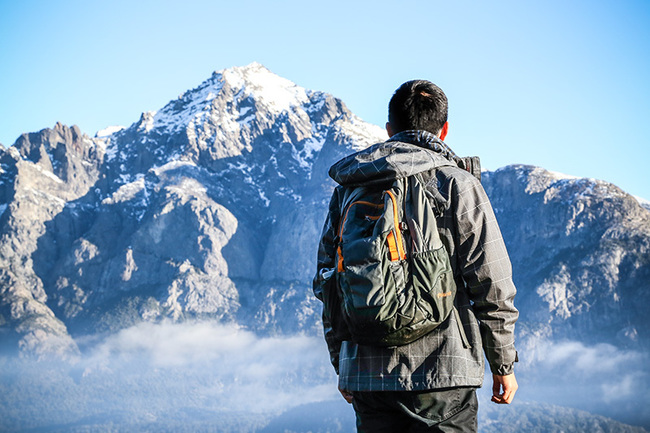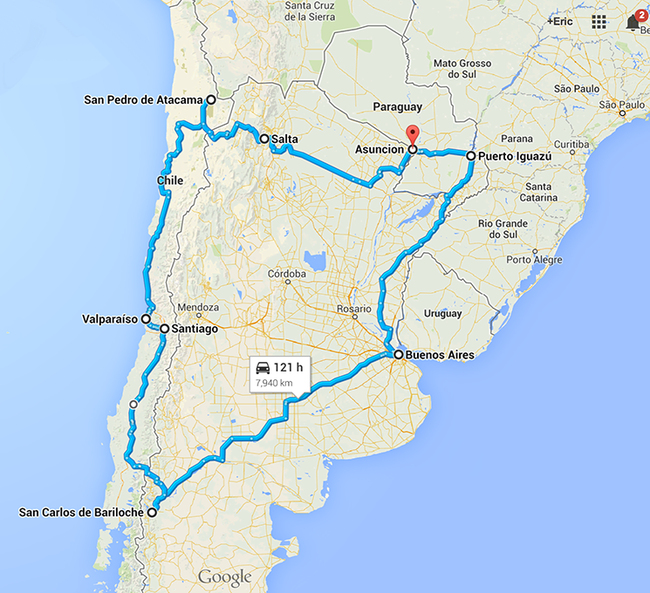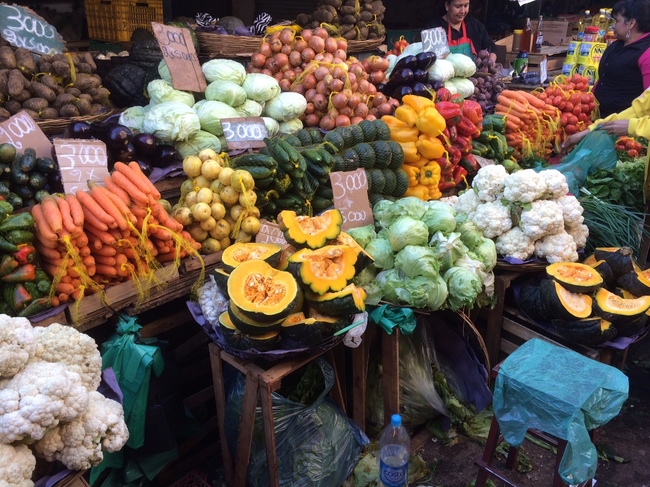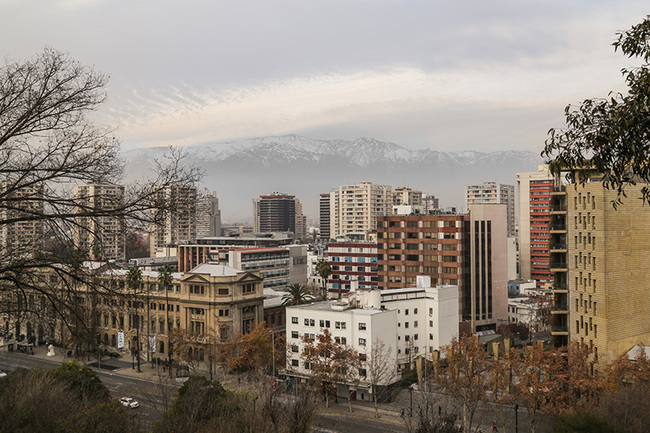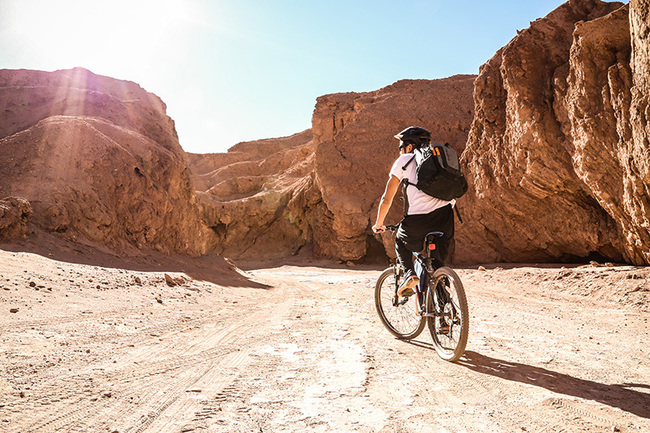From waterfalls to waterfronts: Our trip through Paraguay, Argentina, and Chile
This past June and July, as a graduation gift, my brother and I had the opportunity to travel through three countries in South American: Paraguay, Argentina, and Chile. Our trip was an eye-opening experience that took us to the colorful neighborhoods of Buenos Aires, the snow-capped peaks of Patagonia, the arid Atacama desert, and many more beautiful places. Even more meaningful than the sights, however, was the chance we had to connect with people from an entirely different culture, and experience life in their shoes. The combination of the people, places, and things of South America made it a truly unforgettable trip.
Though there is a plethora of information available online, there were still many things that we had to learn along the way. In this entry, I’d like to document some of these learning lessons that the internet did not prepare us for. The locations that we visited are listed in order, and we felt that these locations made for a very sensible and well-timed one month trip.
At a glance: Our itinerary:
Here are the cities we visited in order and a short summary:
1) Asunción: Capital of Paraguay where the sights are few but the culture is vibrant;
2) Puerto Iguazú: Home base for visiting the Iguazú falls;
3) Buenos Aires: Heart of South America; many colors, tango, and beef;
4) San Carlos de Bariloche: Ski town close to beautiful mountains and hiking;
5) Santiago: Capital of Chile;
6) San Pedro de Atacama: Small town in the heart of the Atacama Desert;
7) Salta: Beautiful city in northern Argentina;
8) Return to Asunción for our flight home
Now on to the tips …
General Planning
With American passports, a visa is required to enter Paraguay, and a reciprocity fee is required to enter Argentina. No fee is required for Chile. The Paraguayan visa can be purchased at and only at the airport in Asunción for $160. The Argentinian fee must be paid online and the receipt must be printed out before entering the country.
The process for visiting countries is thus: Upon entering, we obtained an entrance stamp to the country. When we traveled from one country to another, we first obtained an exit stamp for our current country, and then an entrance stamp for the new country. Sometimes, we obtained both stamps in the same location, but other times, our bus stopped once for the exit stamp, and then stopped later to get the entrance stamp. Upon entering a country, we passed through customs, where our luggage was loosely checked (mostly just for drugs). In Paraguay, the customs is almost non-existent. In Chile, we were forbidden from bringing in fresh fruits and vegetables.
We saved a lot of money on flights by booking a round trip flight into and out of the same city (as opposed to flying into one city and flying out of a different one). Asunción was the cheapest entry point. As a interesting side note, our round trip flight to Asunción was cheaper than a round trip flight to Saō Paulo, even though our flight first connected in Saō Paulo. Once you fly in, the most economical option for traveling longer distances is to take the bus.
The seasons are flipped in South America, so June and July is the winter. The winter is mild in Paraguay and Northern Argentina, but can be harsh in Patagonia and more southern locations. A warm, protective jacket and sturdy boots served us well.
Cash is king and in retrospect, we should have brought even more US dollars than we did. In Argentina, we exchanged US dollars in many locations for as much as 12 pesos to the dollar. When we withdrew money from the ATM, we were subjected to the official rate of exchange of 8 pesos to the dollar. Though cards are accepted at many locations in all three countries, we could always pay with cash for anything - bus tickets, hotels, etc - and many times there was a significant discount if we paid in cash.
Beginnings: Asunción
Asunción is not the typical tourist destination - there were no fancy museums or buildings, nor was there a particularly vibrant downtown. However, experiencing the culture of Paraguay was an eye-opening experience for us. There is a striking contrast between the rich and the poor - most ironically illustrated by the tattered slums constructed only 50 meters away from the luxurious presidential palace. The people are extremely friendly, but Paraguay’s tumultuous history have left many struggling to make ends meet. While it was tempting to stay in a 5-star hotel and avoid the reality, we loved embracing the the experience of walking through Mercado Cuatro, taking the public transportation, and drinking mate with the locals.
The currency exchanges at around 4400 Paraguayan guarani to the dollar. When we first learned this, we were extremely surprised! 1 dollar = 4400 Guarani?? We must be rich! But, we quickly realized that a single guarani was so valueless that they don’t even have a coin for it. As a point of reference, a ride on the public bus costs 2500 Guarani.
Taxis are not as plentiful or as cheap as other Latin American cities, probably because the public bus system is so convenient. Upon arrival, exit the airport, turn right, and walk past the security entrance for cars out to the large roundabout. On the side there is a white bus stop, where the line 30 can be taken to downtown. Exchange only a few dollars at the airport, because there are many exchange locations in the city center that will give a much better rate. For lodging, there is no better place to stay than Urbanian Hostel - it is extremely clean and comfortable for a very economical price.
We arrived on a Sunday and found the city to be very empty - but we quickly found that it bustles far more during the workweek.
We enjoyed trying Mate, a hot, minty, tea drink made from a strong herb called mate. Terere is the same thing, but made from ice water. It was a very unique experience to drink it, as they use a special straw and cup for this form of tea.
There are soccer games almost every day. Check the schedules online or ask at the hostel desk. It is a fun, cheap experience to go watch a local soccer game, where the fans stand and cheer the entire time. We watched Club Guarani play, which was a lot of fun.
While food is plentiful, it was harder to find very healthy, fresh options for an affordable price. One option is to find a good lunch buffet, where we paid by the kilo. We enjoyed Todo Rico’s buffet in the downtown, where there were many fresh vegetables and clean meats for 39,000 guarani (9 dollars) a kilo. Another option is eating lomito arabe, which is a type of wrap similar to a shawarma, and is available at many different locations.
First stop in Argentina: Puerto Iguazú
Puerto Iguazú, our second destination, served as home base for visiting the Iguazú falls, a stunning display of nature’s power. It is worth giving yourself some leeway here - while the falls can be explored in a single day, the weather can be unpredictable which can result in park closures, or simply sub-optimal photos.
To get there from Asunción, we took a bus from the Asunción bus terminal to Ciudad del Este first, then transferred onto another bus that took us to Puerto Iguazú. Even though the second bus drove through Brazilian territory, we didn’t need a Brazilian visa. We simply obtained an exit stamp for Paraguay, and an entrance stamp for Argentina.
There is free wifi available at the bus terminal in Puerto Iguazú.
The price of taking a cab from the city to the falls is equal to the price of the bus if the cab fare is split between four people.
There’s not really any need to visit the Brazilian side of the park. Instead, we experienced much more on the Argentinian side. It was good for us to visit early in the morning, as the water’s spray created beautiful rainbows.
The Macuco trail is a short hike that leads to a small waterfall. While the waterfall itself is not impressive, we called YOLO and swam around the waterfall, behind it. That was incredible.
Pizza Calor (next to the bus terminal) is a decent place to eat for a reasonable price.
There are regular buses that depart to Buenos Aires. Rio Uruguay, Via Bariloche, and Crucero Del Norte are reputable companies with comfortable, modern buses.
A note about the bus system
Taking long bus rides is the preferred method of traveling across South America. The bus companies offer three different classes of seating: semi-cama, cama, or suite (also known as primera clase). Semi-cama seats resemble airplane seats, but recline a slight bit more and have a footrest. Cama seats are much wider, and can recline to around 150 - 160 degrees. Suite seats recline flat, and feature many amenities including a personal TV and comfortable bedding.
We took 20+ hour trips in all three types of seating. While we loved sitting in suite, we found that very few companies actually offered the suite service. Many companies only had semi-cama and cama classes of seating. The cama class is decently comfortable, and we found to provide the best value. Usually, sitting in cama was only 10% more expensive than sitting in semi-cama, and we felt that it was worth it to have the extra comfort.
When buying your tickets, ask if there are any ofertas (offers). Many times for us, leaving a few hours earlier or later, or paying in cash, resulted in significant discounts.
Bring plenty of water on the longer bus trips. The sinks didn’t work in some of the buses that we took, which meant we brushed our teeth and washed our hands with bottled water that we had with us.
A good pair of headphones allowed us to enjoy the movies on the bus much more comfortably.
Sitting as close to the front of the bus as possible resulted in far more quiet and less nauseating rides.
The heart of South America: Buenos Aires
After an overnight bus ride, we arrived in a chilly Buenos Aires in the middle of June. The city is extremely vibrant, colorful, and metropolitan. People take care of their appearance here - they say that in Buenos Aires, being ugly is not an excuse to not look good.
There are plenty of things to do - the information desk at the bus terminal will provide you a very good map as well as helpful tips on where to visit.
The day here starts and ends much later than we are used to. People wake up around 10 or 11 am, nap in the late afternoons, and have dinner around 9pm. If you tour the city any earlier than 10am, it feels very empty.
The clubs start to fill up around 2am, and last until 6 or 7 am. We made the mistake of starting our night around midnight, and the night life areas were still completely empty.
Most supermarkets don’t sell actual meat - instead they carry a small selection of cheese and hams. To buy meat, we had to visit a carnicería - the locals usually know where the closest one is.
There is no peanut butter here, and there were a few mornings where we were left simply unsatisfied because we could not buy it anywhere. As a consolation prize, however, there is plenty of dulce de leche, a delicious caramel spread. We always ate a little more than we should have.
The pizza is quite good.
The restaurants along the banks of the Dique (the small manmade canal on the edge of downtown) are high-end, but expensive. For a cheaper (and better) lunch, walk two more blocks to the east to Giralt avenue in front of the ecological reserve, where we found unbelievably good sandwich street vendors.
The San Telmo market on Sundays, as well as a peaceful walk through the Recoleta neighborhood, should not be missed.
Be very vigilant with your belongings, as this was the only city that we visited where we actually experienced people trying to steal our stuff.
Visiting Patagonia: San Carlos de Bariloche
After a twenty two hour bus ride from Buenos Aires, we visited Bariloche, a beautiful small town in the Río Negro province. Bariloche serves as a good base for exploring Nahuel Huapi, a national park with many beautiful mountains and lakes. The tourist information desk at the bus terminal is very helpful, as is the information office in the downtown. The city reminded us of a quiet ski town, much like Tahoe.
There are two public bus companies that help locals get around in Bariloche: Tres de Mayo and Las Grutas. You must purchase a bus card in advance, as you cannot pay in cash. Each company has its own unique card, (you cannot ride the Las Grutas buses with a Tres de Mayo card, for example). The cards can be purchased at the bus terminal, and charged at convenience stores throughout the town. All local buses leaving from the bus terminal go to the center.
Without special gear, it is near impossible to explore the depths of Nahuel Huapi in the wintertime, as the snow is deep and the winds are strong. However, there are still many beautiful places to see around Bariloche with basic gear. Our favorites were hiking up the Llao Llao hill (pronounced shao shao), and also skiing at Catedral.
There is a regular bus that runs to Llao Llao park - it says “Llao Llao” in the front window. There is another bus that runs directly to Catedral, which leaves only at specific times - check the schedule in the main bus stop downtown.
Entering Chile: Santiago and Valparaiso
There are no direct buses from Bariloche to Santiago, but we bought a trip to Santiago that connects in certain Chilean cities. Andes Mar is a good company with comfortable, modern buses. Because of customs regulations, any fruits or vegetables we brought had to be finished on the bus before crossing into Chile.
While this is a very broad generalization (and there are certainly exceptions), we noticed that Chileans are a little colder and less friendly than Argentinians. It felt a little like the difference between the people in California and New York - Argentinians were warm and very open to helping us, often giving us supplementary information or helpful tips, while many Chileans who we interacted with felt more distant and less concerned with our needs. Of course, this is not to say that Chileans are bad people; indeed, we met many Chileans who were very helpful. However, it is better to be more prepared in Chile, as it is harder to find people to help with directions and recommendations.
We should have changed a bit of money either with other passengers on the bus, or at exchange places in Bariloche. We forgot to do this, and found ourselves in Chile without Chilean pesos, and couldn’t even use the restroom because it cost money. That said, many more places accept credit cards in Chile than in Argentina.
Santiago is a very modern, developed city situated at the foot of the Andes. The subway system is very convenient for traveling to nearly anywhere in the city. Visit La Vega Central to buy groceries - the food will be much fresher than any supermarket.
Finding coins can be a pain. We needed them to run our laundry, but not a single convenience store was willing to give us coins. Eventually, we tried some of the money exchange (cambio) shops by downtown, where many exchanged our bills for coins for free.
The bread is extremely good, and it was worth waiting for a warm batch.
We loved the chorrillana, a classic Chilean dish that is very heavy but delicious.
There is free wifi right outside the Fine Arts Museum, as well as in the sculpture garden, in case you need a spot.
While in Santiago, we took a nice day trip to the coastal city of Valparaiso. The colorful houses of Valparaiso were deemed a UNESCO world heritage site, and in the city we found stunning views of the ocean. We should have brought our basketball gear, as there was an amazing basketball gym right next to the bus terminal.
Since the ride is only about an hour, the bus to Valparaiso leaves from a different place (near the universidad stop on the subway) than the main bus terminal. However, we were able to buy tickets at this station to our next destination as well.
Traveling North: The Atacama Desert
From Santiago, our next destination was San Pedro de Atacama, a small town in the middle of the Atacama Desert in northern Chile. To arrive, we first took a 23 hour ride to the town of Calama, and from there took a local bus (40 min) to San Pedro. There is pretty much nothing to see and do in Calama, unless you’re specifically interested in touring the mine, and the bus to San Pedro leaves very regularly (about every 20 minutes). We were hungry when we arrived at the Calama bus station, and directly across from the station we found a restaurant that serves the best sandwiches in South America.
San Pedro’s economy is mainly based on tourism, as it is situated in the middle of many beautiful parts of the desert. We stayed 4 nights at the Hostel Nuevo Amanecer, and we would highly recommend this hostel, as it was clean, spacious, and comfortable. Though it is a little farther from the city center, it actually is nice that it is so quiet.
When we visited, the days were warm, but the night time temperatures were extremely cold. Be prepared for temperatures to drop very quickly. We tried to shower when it was still warm outside, as hot water was not always guaranteed. When the temperatures are already very cold, a cold shower was extremely painful.
We loved the bike ride to both Valle de la Muerte and Valle de la Luna. Not only did it save money, but it was very enjoyable to explore at our own pace and it was quite an experience to ride through the desert scenery. We also rode our bikes to Laguna Cejar, but in retrospect I think it would have been more worthwhile to take a tour there instead, as it was a rather long, bumpy ride, with little scenery.
We should have visited all of the places near San Pedro even earlier in the day than we did, as the wind was quite powerful in the afternoon.
We loved our tour to the Geyser Tatio, but in retrospect we should have signed up for the tour on the last day of our stay in San Pedro. The geysers are at a very high altitude, and without first adjusting for a few days, the thinness of the air made my head hurt. We also made the mistake of not wearing more clothes - the early morning temperatures at the geyser were around -12 degrees C.
This goes without saying, but bring plenty of water, sunscreen, and Chapstick, as the desert environment is unforgiving.
Walking south on Tocopilla avenue, a few blocks past downtown, we found an extremely good restaurant on the left side of the street. The walk there is dark and the restaurant does not see many customers, but the food is well-cooked and well-priced.
Beginning of the end: Visiting Salta
From San Pedro, a bus to the Argentinian city of Salta leaves each morning at 9 am. The bus ride takes the whole day, and you are essentially forced to spend the night in Salta. This, however, is not bad at all, as Salta is a very vibrant city with many interesting things to do.
The empanadas at Doña Salta in downtown were a bit pricy, but absolutely
to die for. They are a must-try.
We arrived in Salta without a reservation anywhere for the night, and we looked around at different places we could stay. Though inexpensive, we found the hostels in Salta to all be fairly dirty. We finally decided to pay a little more and stay at El Mirador De Salta, which was clean, comfortable, and conveniently located. There was a significant discount when we offered to pay in cash (we paid 490 pesos a night - about 42 USD).
We hiked to the top of Cerro San Bernardo. It was good exercise, and at the top we found a small collection of workout equipment which we used for free.
Going home: Back to Asunción
To return to Asunción from Salta, we took a 20 hour bus ride to the border city of Clorinda. To our surprise, there was no bus terminal in Clorinda, and instead we arrived on the side of the street next to a small office. From there, we took a 80 peso cab ride to the actual border. Because there were only a few cab drivers when we stopped, we were totally ripped off on the cab ride, but there was not much that we could do. After getting our stamps. at the border, we took another public bus from the border station to the bus terminal in Asunción. It felt good to be back.
Parting Thoughts
Jonathan and I were very lucky to be able to visit South America, and meet strangers who showed us immense kindness. We can’t wait for our next trip down - we’re thinking Peru and Bolivia!
